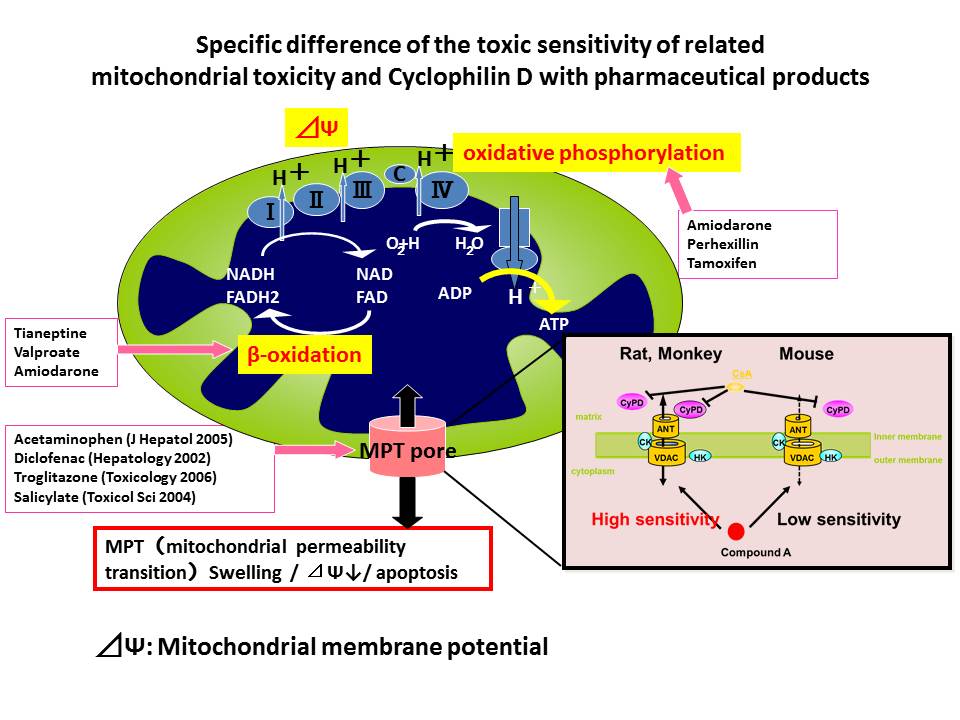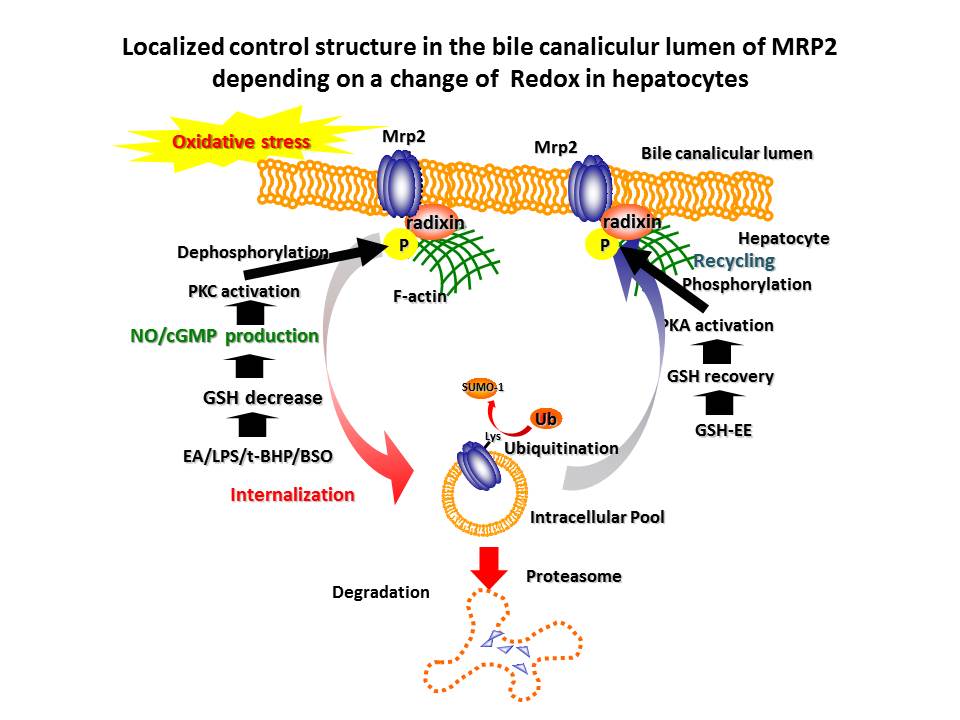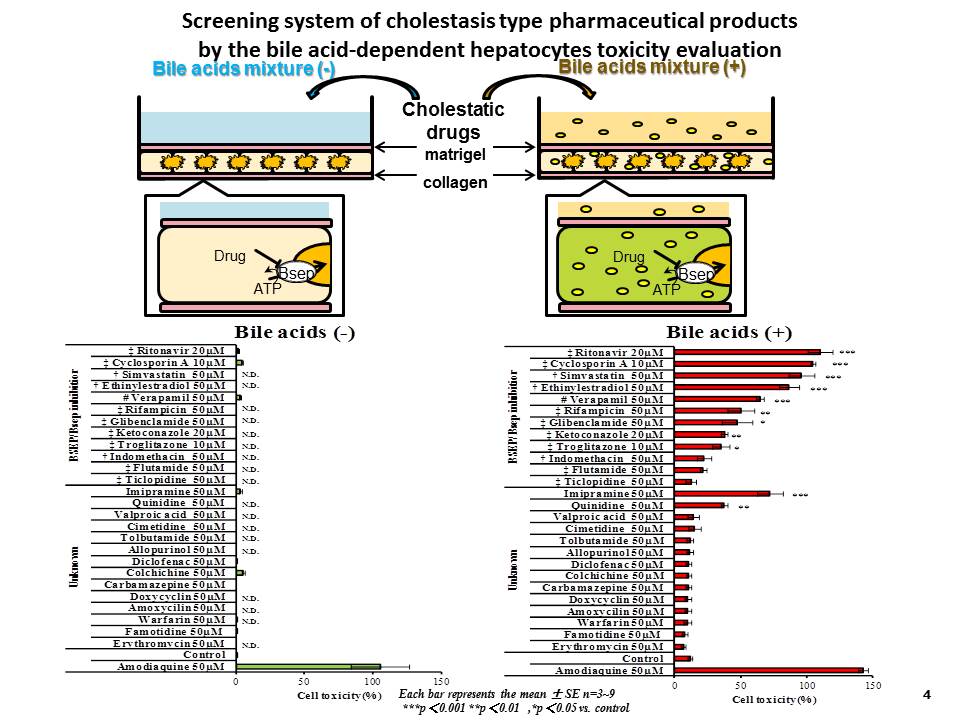Research
At laboratory of biopharmaceutics, we are investigating disposition and harmful effects of drugs and candidate compounds. Our laboratory has been pursuing following research topics which lead to safe drug development and efficient use of them by elucidating underlying mechanism of adverse drug reactions tightly related to drug disposition, as described below.
1. Mechanisms of drug-induced liver injury
Mitochondria are organelles that produce essential energy for vital activity. Its dysfunction causes apoptosis and leads to cell toxicity. We previously have revealed that there are interspecies differences in drug or candidate compounds-induced mitochondrial damage, and this is resulted from the difference of expression level of cyclophilin D which is majorly expresses in mitochondria. cyclophilin D is the protein which is responsible for regulating ionic balance in mitochondria. We consider that these findings may be useful for more precisely prediction of DILI in the drug development.
<Publication>
Sekine S et al. The role of cyclophilin D in interspecies differences in susceptibility to hepatotoxic drug-induced mitochondrial injury. Biochem Pharmacol. 86(10):1507-14, (2013). (PubMed)

2. Regulatory mechanism of xenobiotic transporters and excretion of xenobiotics and bile acid in liver
We have worked on studies about mechanism of biliary excretion of xenobiotic
and drugs through apical membrane, especially by multidrug resistance-associated
protein 2 (MRP2) and bile salt export pump (BSEP). We found that membrane
expression level of these transporters is changed by various stimulations
such as oxidative stress, and that of MRP2 is particularly dependent on
phosphorylation state of anchored protein radixin which plays a role of
mooring it on the cytoskeleton.
<Publication>
Sekine S et al. Sustained intrahepatic glutathione depletion causes proteasomal degradation of multidrug resistance-associated protein 2 in rat liver. Biochim Biophys Acta.1822(6):980-7, (2012). (PubMed)

Moreover, if these transporters are inhibited by drugs, it leads to cholestatic liver injury. We have first succeeded in detecting hepatotoxicity due to inhibition of bile efflux transporters by co-incubation with bile acids and test compounds in sandwich cultured hepatocytes which are coated with extracellular matrix. This has been recognized as a beneficial drug screening method for prediction of cholestatic DILI and previously patented.
<Publication>
Ogimura E et al. Bile salt export pump inhibitors are associated with bile acid-dependent drug-induced toxicity in sandwich-cultured hepatocytes. Biochem Biophys Res Commun. 416(3-4):313-7, (2011). (PubMed)

